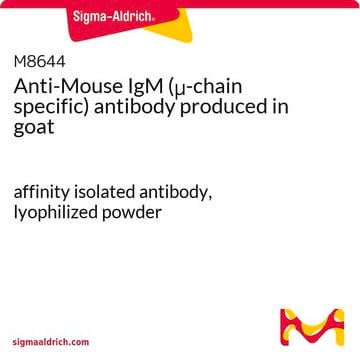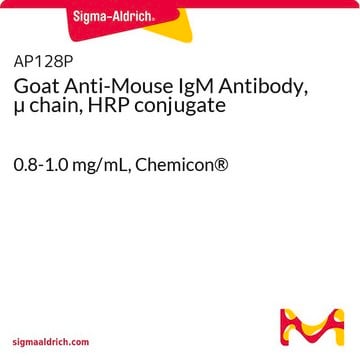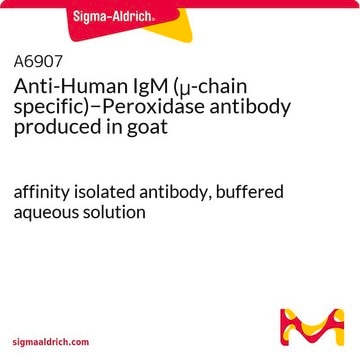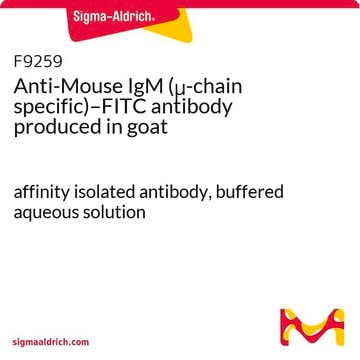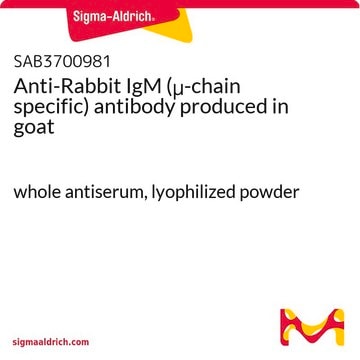A8786
Anti-Mouse IgM (μ-chain specific)–Peroxidase antibody produced in goat
affinity isolated antibody, buffered aqueous solution
Sinônimo(s):
Goat Anti-Mouse IgM (μ-chain specific)–HRP
About This Item
Produtos recomendados
fonte biológica
goat
conjugado
peroxidase conjugate
forma do anticorpo
affinity isolated antibody
tipo de produto de anticorpo
secondary antibodies
clone
polyclonal
forma
buffered aqueous solution
técnica(s)
direct ELISA: 1:10,000
Condições de expedição
dry ice
temperatura de armazenamento
−20°C
modificação pós-traducional do alvo
unmodified
Descrição geral
Imunogênio
Aplicação
- western blotting
- enzyme linked immunosorbent assay (ELISA)
- immunohistochemistry
forma física
Nota de preparo
Exoneração de responsabilidade
Not finding the right product?
Try our Ferramenta de seleção de produtos.
Palavra indicadora
Warning
Frases de perigo
Declarações de precaução
Classificações de perigo
Aquatic Chronic 3 - Skin Sens. 1
Código de classe de armazenamento
12 - Non Combustible Liquids
Classe de risco de água (WGK)
WGK 2
Ponto de fulgor (°F)
Not applicable
Ponto de fulgor (°C)
Not applicable
Certificados de análise (COA)
Busque Certificados de análise (COA) digitando o Número do Lote do produto. Os números de lote e remessa podem ser encontrados no rótulo de um produto após a palavra “Lot” ou “Batch”.
Já possui este produto?
Encontre a documentação dos produtos que você adquiriu recentemente na biblioteca de documentos.
Os clientes também visualizaram
Nossa equipe de cientistas tem experiência em todas as áreas de pesquisa, incluindo Life Sciences, ciência de materiais, síntese química, cromatografia, química analítica e muitas outras.
Entre em contato com a assistência técnica
